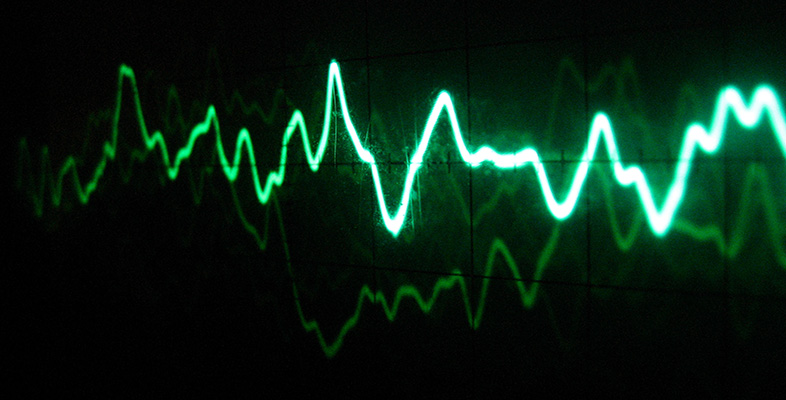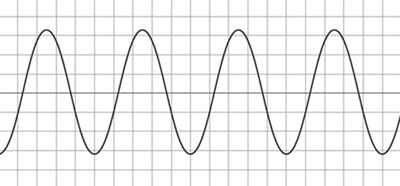2 Sinusoidal pressure waves
2.1 The importance of sine waves
For much of the rest of this unit we shall be concerned with the properties of a type of sound wave that when represented as a graph has a characteristic shape known as a sine wave. Figure 1 shows you what a sine-wave graph looks like. For the moment you need not be concerned with what this graph represents.
Despite their theoretical importance, sine waves are of limited use in the actual business of creating music – at least music of conventional kinds. Few instruments, for instance, produce a sine-wave type of sound when played in the normal way, although in electronic music sine waves can be a basic component of synthesised sounds.
Because pure sine-wave sounds are not often heard in music, I ought to begin this study by giving a few reasons why they are so important. One reason has already been hinted at in my reference to electronic synthesis. For our purposes sine waves are important for three main reasons:
They can be used to define some basic terms and quantities relating to sound of all kinds. They therefore give us a basic vocabulary for talking about the physical properties of sound.
They allow us to explore the relationships between the purely physical properties of sound and the subjective experience of hearing it.
They are fundamental to the analysis and synthesis of sounds that are used musically (and also non-musically).
In this unit I will focus on the first two reasons.
Sine waves are fundamental in many areas of mathematics, science and technology, not just in sound. Many of the properties of sine waves, which I shall discuss later in this unit, are therefore of wider application than sound, although I shall not be referring to these other applications to any significant extent. However, before I can say anything further about sine waves, I need to prepare the ground by discussing pressure waves.

